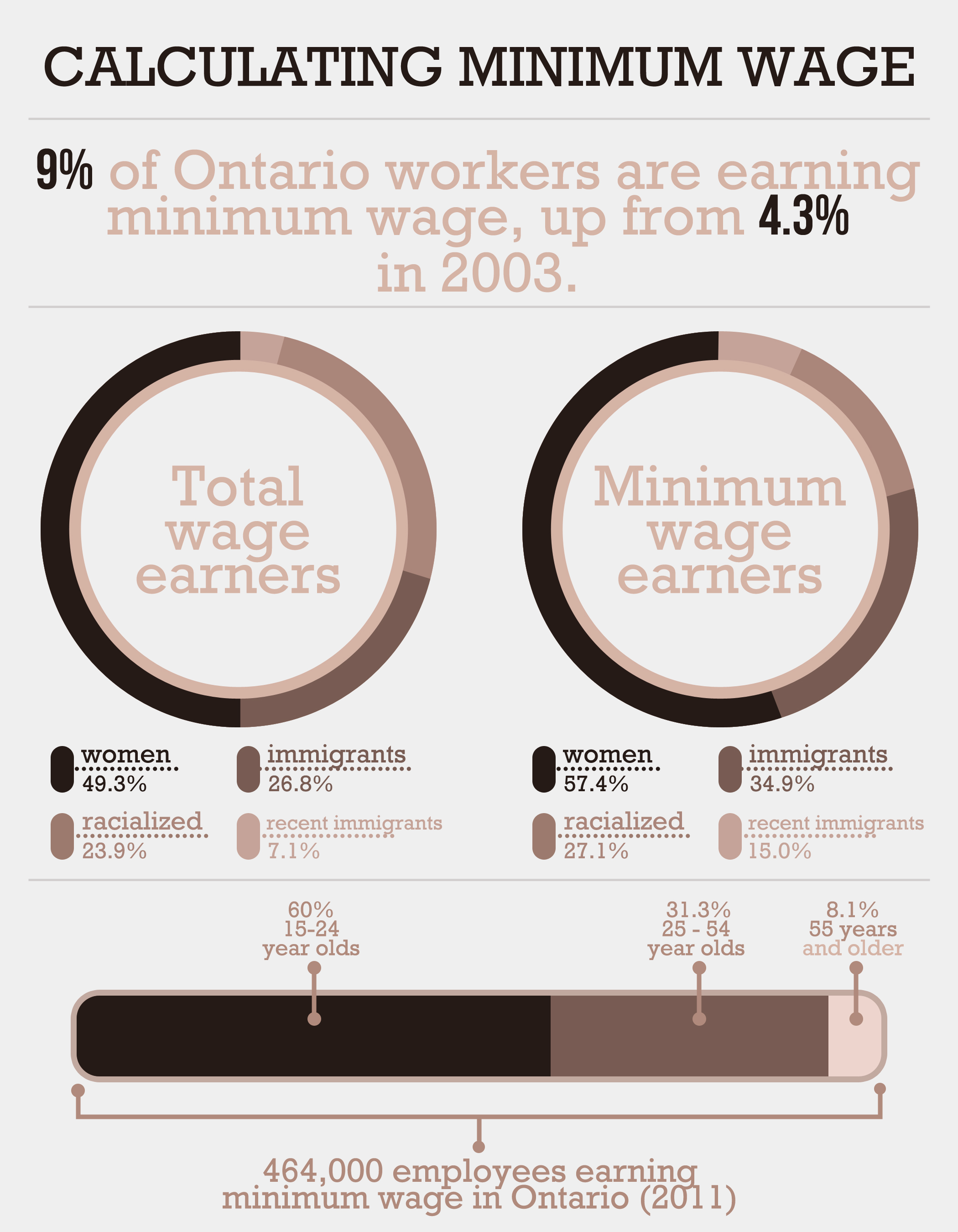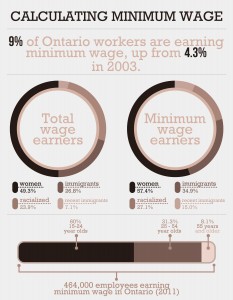Minimum wage recipients increase


A global recession has left lingering effects.
The changing labour market has dramatically altered the workforce in Ontario, with the number of people earning minimum wage having doubled since 2003. Out of Ontario’s workforce, 9 per cent are working for minimum wage, up from 4.3 per cent in 2003.
Sheila Block, director of economic Analysis with the Wellesley Institute is the author of the report that revealed the changing dynamics of the labour market in Ontario. Block explained that a shift in the economy and the after-effects of the 2008 recession are the driving forces behind the dramatic increase in minimum wage earners.
“There is a shift in our economy and so we have more jobs at the top of the income scale and more jobs at the bottom, and we have fewer jobs in the middle,” Block explained. “The second is, “I think we’re still suffering from the kind of after-effects of the 2008 recession.”
The report showed that out of 464,000 Ontarians who were working at minimum wage in 2011, 31.3 per cent were between the ages of 25-54, 8.1 per cent were 55 years and older and 60.6 per cent were 15-24 years old. While it is commonplace that the majority of minimum wage earners are under the age of 24, minimum wage earners between the 25-54 ages demographic are becoming a growing norm.
Block commented on this growing trend of older minimum wage earners, indicating that it is problematic for Ontarians. “Those people are people who are trying to support themselves and their families, they are at a minimum wage for a longer period of time and it’s not something that’s transitional as they’re getting their education.”
The report further indicated that women, visible minority groups and recent immigrants are disproportionately earning at the minimum wage level. Women make up 49.3 per cent of the labour force; however, they make up 57.4 per cent of those who are working for minimum wage, according to the report.
Visible minority groups account for 23.9 per cent of the total workforce, with 34.9 per cent earning minimum wage, and recent immigrants make up 7.1 per cent of total employees and 15 per cent of those on minimum wage.
Block is recommending an increase in the minimum wage, which is currently sitting at $10.25 an hour. “Minimum wage increases kind of have two kinds of effects,” she explained. “One is that it could reduce the number of people that are working, but what my expectation is, is that the increase of the minimum wage in this kind of economy, where we have a lot of unemployment, would mean that it would actually have a positive impact.”
Block said that an increase in minimum wage would likely lead to increased spending on behalf of those workers.
“And if they go out and spend that money, they increase demand,” she said.
A person with very low income who receives a wage increase is more likely to go out and spend that money, Block explained.
Skeptics of a minimum wage increase would argue that it would result in the potential for a slow-down in employment growth; however, Block does not believe this to be likely.
“There is absolutely no academic research that shows an actual decrease in employment as a result of an increase of minimum wage,” Block said.

